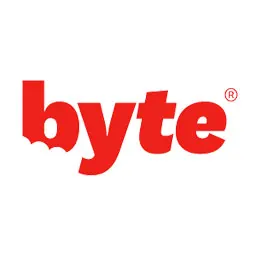Why You Should (Almost) Never Pay for Braces 'Out of Pocket'.

Table of Contents
- Why are Braces so Expensive?
- Does Insurance Cover the Cost?
- Ways to Save on Braces
- Alternative Options
- Understand Your Cost Options
Braces are an investment, and chances are, they will cost you thousands of dollars. That's true whether or not you have insurance coverage.
If your teeth are significantly misaligned, braces offer the best path to a better smile. But if your teeth need a mild or moderate nudge to take up proper positions, braces could offer much more help than you need, and that could mean wasting hard-earned money.
Why are Braces so Expensive?
Adults can expect to pay between $4,800 and $7,135 for braces, experts say. If you need extensive help for many months, you'll pay more than someone who is released from treatment sooner. You'll pay much more for braces than you would for aligners.
Braces are expensive because of these reasons:
You can't tighten braces at home, and you can't swap out wires without a pro's help. Your doctor incurs expenses for rent, staffing, cleaning, and more, and you pay for some of that every time you head into the office.
Braces work, but they move teeth very slowly. Researchers say that treatment time with fixed appliances (like braces) can last 19.9 months up to 24.6 months. The longer you wear braces, the more often they must be adjusted in a visit with the orthodontist. If you skip appointments or don’t follow the proposed treatment plan, your care could take even longer.
Some orthodontists provide you with an upfront estimate of your treatment time frames and costs. However, longer treatment times caused by neglect could appear on an extra bill.
Braces are fragile, and they can break if you eat the wrong foods, have an accident, or otherwise don't protect your hardware.
Consumers can add to the cost of braces by choosing unusual brackets or installation methods. For example, if you are concerned about the look of braces, you might ask for porcelain brackets that are the same color as your teeth. Or you might ask your dentist to apply the brackets on the back of your teeth. Both of these choices can add thousands to your overall bill.
Braces can cost $5,000 or more, and it's unusual for insurance companies to pay the entire bill.
Does Insurance Cover the Cost?
Full-coverage dental insurance can include orthodontic treatment. However, these plans may not cover 100% of your costs.
Your dental coverage may require costs such as the following:
Deductibles: These are fees you must pay before your plan kicks in anything for your care.
Coinsurance: These are fees that represent a percentage of the costs shared between you and the insurance company.
Copayment: These are flat fees you must pay each time you go to visit the orthodontist or dentist.
Annual maximums: Some insurance companies cap the amount they’ll pay in 12 months. If you have higher fees, you’ll pay them.
Premiums: This is how much you pay every month for your plan.
Some plans will cover orthodontic care for any reason, while others require your dental professional to state that the problem is medically necessary.
It’s nearly impossible to estimate how much an insurance plan like this will cover for braces. Every single plan works differently, with different fee structures and payments required. The best way to understand how much insurance will pay is to call the company, outline your need for treatment, and ask for specifics. Your dental office may be happy to take this step for you before care begins.
Some dental and health insurance plans will provide orthodontic care in special circumstances. For example, if you’re in an accident that leads to misalignment problems, your health insurance or dental insurance may cover the costs. These issues are somewhat rare, and you may need a doctor’s help to navigate your coverage.
Ways to Save on Braces
If you want braces but don’t have insurance or the money to pay full costs out of pocket, there may still be options.
You may be able to save on braces in these ways.
Opt for Metal ‘Traditional’ Braces
More expensive options include ceramic “invisible” braces or lingual braces (which are the most expensive braces treatment and attach to the back of the teeth).
Search for Discounts
Some practices may offer a discount to those without insurance. Others have discounts for certain populations, like students, military members, first responders, teachers, and others.
Find a Dental School
A dental school in your area may offer low-cost services, including braces and orthodontic care.
Start by searching for dental schools near you on the website for the American Student Dental Association. Find a school that’s close to where you live or work, and connect with them. Most facilities make it easy to enroll. Call to make an appointment and fill out a new patient form. If you’ve visited other dental professionals in the past, ensure that they send your records to this clinic.
Dental schools allow you to work with students who are working on becoming dental professionals. You can get high-quality care at a lower price. However, know that these aren’t bargain basement bins. You can’t haggle and negotiate for a lower fee or drop in for care. This is still a professional environment where standard rules apply.
Consider a Payment Plan
Some orthodontists and dental offices may offer low-fee financing to allow for you to make easy monthly payments.
Use Your FSA or HSA
If you have a flexible spending account or health spending account, you can use it toward your orthodontic treatment.
Look Into Dental Discount Plans
A dental discount plan is different than insurance. With a discount plan, you usually pay an annual fee and receive access to exclusive dental discounts. Look into available plans to see if you can find one that will help with your orthodontic needs.
Research Community Resources
Low-cost dental clinics or public health initiatives may offer low-cost orthodontic care in your area. Call your local health department or do some digging online to find out if anything is available near you.
Understand Your Potential Costs
Your choices have a deep impact on how much you’ll pay to get the smile you always wanted. This chart of estimated costs can help you make smart choices:
| Average Cost Without Insurance | Average Out-of-Pocket Cost With Insurance |
Traditional braces | $4,937 | $3,407 |
Ceramic braces | $4,572 | $2,570 |
Byte Aligners | $1,999 | Varies |
What Else Can You Try?
If you don't have dental insurance, or the plan you have won't help you to pay your bills, even thinking about braces can be intimidating. You may believe you simply can't get a better smile, as you can't find the money in your budget to pay for these tools.
You do have choices.
Aligners put consistent pressure on your teeth, and they encourage dental ligaments to stretch and bend. This is the same mechanism that underpins braces, but aligners tend to work a bit quicker. They are also less painful and more subtle.
Researchers say aligners are effective in treating mild or moderate smile issues. Wear trays as directed, and your teeth will move.
Aligners also come with a much smaller price point. Aligner companies pair with orthodontists, and they supervise all treatment plans. But telemedicine saves you money. You'll tackle these steps at home:
You'll mix putty, fill trays, bite down, and send in the results. You won't need an office visit to complete this work.
You'll get a series of trays when you sign up. You'll swap out one tray for another at home based on your doctor's instructions.
You'll snap photos, jot notes, and otherwise communicate remotely with your dental team. You'll skip the in-office visits.
Aligner companies pass these savings on to you. It's not uncommon to pay about $2,000 for complete aligner treatment. That is much less than you would pay for braces.
Few families have thousands of spare dollars to toss at extensive solutions they don't need. Most of us appreciate saving a dollar or two if we can. If your smile needs a mild or moderate adjustment, you could save that money by choosing aligners over braces. Your budget will thank you.
Frequently Asked Questions
These are common questions we hear about the out-of-pocket costs of braces:
It depends. Orthodontists, dentists, and aligner companies all have different policies and contracts. Some have all fees disclosed up front, so nothing is hidden. Others provide only estimates, which could leave you open to unexpected fees.
At the end of your treatment program, you’ll need to wear retainers. Some companies (including aligner organizations) offer retainers as part of your treatment fees. Others require you to cover the cost of your retainers.
It depends. Some insurance policies include coverage for orthodontic care. However, others don’t provide this kind of care for adults who want to straighten their teeth. The best way to determine if your plan will help you pay is to call the company and ask.
It depends. Strategies like finding a dental school, looking into discount dental plans, and searching for discounts may be helpful. Opting for aligners, rather than sticking with braces, may also help to save you money.
